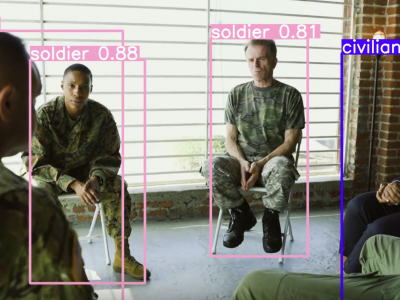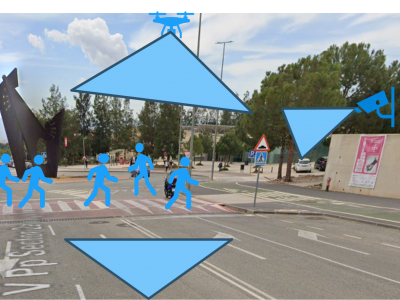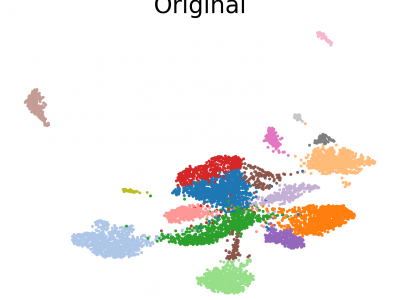Artificial Intelligence

ShanghaiTechRGBD is a large-scale RGB-D crowd counting dataset including 2,293 pairs of RGB-D images, which were annotated with the heads of 144,512 pedestrians. In addition, to facilitate the verification of the algorithm, the dataset is divided into training and testing sets, which contain 1,193 pairs of images and 1,000 pairs of images, respectively. This dataset is derived from the following paper: 1. Locating_and_Counting_Heads_in_Crowds_With_a_Depth_Prior. 2. Density map regression guided detection network for rgb-d crowd counting and localization. To use this dataset, please cite:D.
- Categories:
 207 Views
207 Views
DroneRGBT dataset consists of 3,600 pairs of RGB-T images, which have annotations for a total of 175,698 pedestrians that were captured by drones. This dataset is split into 1,800 pairs of images for training, and the rest are used for testing, thereby further improving the comprehensiveness of our experimental verification. This dataset is derived from the following paper:Rgb-t crowd counting from drone: A benchmark and mmccn network.To use the dataset, please cite: T. Peng, Q. Li, and P.
- Categories:
 227 Views
227 Views
RGB-T Crowd counting. RGBT-CC dataset is made up of 2,030 pairs of RGB-T images, each having a resolution of 640×480, and these images were captured under different scene circumstances and lighting conditions. A total of 138,389 pedestrians are precisely annotated in this dataset, and there are roughly 68 pedestrians on average in each image. It is divided into three separate subsets: training is performed using 1,030 images, 200 images are used for validation, and 800 images are for testing.
- Categories:
 171 Views
171 ViewsScene understanding in a contested battlefield is one of the very difficult tasks for detecting and identifying threats. In a complex battlefield, multiple autonomous robots for multi-domain operations are likely to track the activities of the same threat/objects leading to inefficient and redundant tasks. To address this problem, we propose a novel and effective object clustering framework that takes into account the position and depth of objects scattered in the scene. This framework enables the robot to focus solely on the objects of interest.
- Categories:
 239 Views
239 ViewsThis dataset contains high-resolution retinal fundus images collected from 495 unique subjects from Eye Care hospital in Aizawl, Mizoram, for diabetic retinopathy (DR) detection and classification. The images were captured over five years using the OCT RS 330 device, which features a 45° field of view (33° for small-pupil imaging), a focal length of 45.7 mm, and a 6.25 mm sensor width. Each image was acquired at a resolution of 3000x3000 pixels, ensuring high diagnostic quality and the visibility of subtle features like microaneurysms, exudates, and hemorrhages.
- Categories:
 350 Views
350 ViewsThis dataset was produced as part of the NANCY project (https://nancy-project.eu/), with the aim of using it in the fields of communication and
- Categories:
 187 Views
187 Views
Sign Language Recognition integrates computer vision and natural language processing to automatically interpret hand gestures and translate them into spoken or written Bengali. The primary goal is to bridge the communication gap between sign language users and non-users by recognizing gestures, movements, postures, and facial expressions that correspond to spoken language elements. Since hand gestures are the cornerstone of sign language communication, they play a pivotal role in improving the accuracy of sign language recognition systems.
- Categories:
 121 Views
121 Views
SUNBURST Attack Dataset for Network Attack Detection
Overview:
The SUNBURST dataset is a unique and valuable resource for researchers studying network intrusion detection and prevention. This dataset provides real-world network traffic data related to SUNBURST, a sophisticated supply chain attack that exploited the SolarWinds Orion software. It focuses on the behavioral characteristics of the SUNBURST malware, enabling the development and evaluation of security mechanisms.
- Categories:
 107 Views
107 ViewsSingle-cell RNA sequencing (scRNA-seq) enables high-resolution analysis of cellular heterogeneity, but dropout events, where gene expression is undetected in individual cells, present a significant challenge. We propose \textbf{scMASKGAN}, which transforms matrix imputation into a pixel restoration task to improve the recovery of missing gene expression data. Specifically, we integrate masking, convolutional neural networks (CNNs), attention mechanisms, and residual networks (ResNets) to effectively address dropout events in scRNA-seq data.
- Categories:
 7 Views
7 Views



